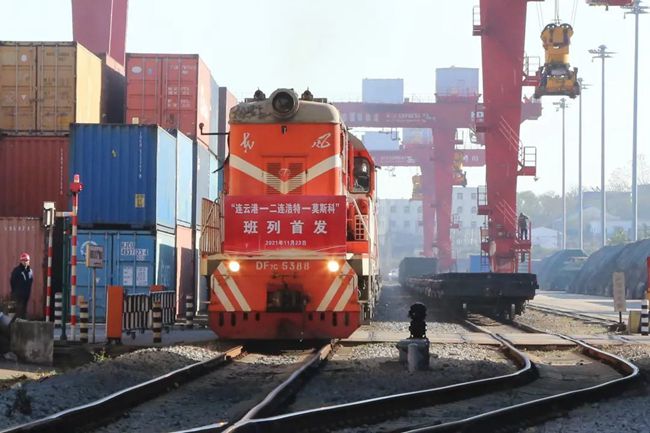Freight train X8022, loaded with 100 teUs of export goods, left Lianyungang logistics Cooperation Base in Lianyungang, Russia, Thursday morning, sounding its horn and leaving for Moscow, the capital of Russia, marking the first china-Moscow freight train. This is the second new china-Europe freight train line to be opened this year, following the lianyungang freight train to Poland.
The train, carrying tires, lamps, soles, sockets and other small goods manufactured in Jiangsu, Zhejiang and Shanghai, is expected to arrive at Moscow Volsino station in 20 days after leaving the country via Erenhot port, according to China Railway Shanghai Bureau Group Co.

"The opening of this line has further enriched the operation of Lianyungang's China-Europe freight train lines and improved the overall freight capacity, which is of great significance to build more boutique freight train lines in Lianyungang." Chen Jun, manager of the Production operation Department of Lianyungang Zhong-Harbin International Logistics Co., LTD., said that with the support of the new channel and new business, Lianyungang China-Europe Freight train has gradually transferred from the initial stage of market-oriented cultivation and promotion to the operation track of high-quality development.
Relevant personage introduces the railway, lianyungang to Moscow central trains lines opened, between lianyungang and all over Europe and set up a new international logistics channel, for small commodities, household appliances, such as "made in China" exports, as well as wood, cotton, etc. "Europe" import provides more convenient transport conditions, conducive to boost economic and trade exchanges between China and Russia continued to deepen.
The China-Kazakhstan (Lianyungang) Logistics Cooperation Base was established in 2014. Since the beginning of this year, the base has steadily operated point-to-point direct trains to Almaty and Tashkent, shared trains to Azerbaijan, Georgia and Turkey, and opened a new transit transport channel to Poland, which has realized a negative growth in the number of train lines.

